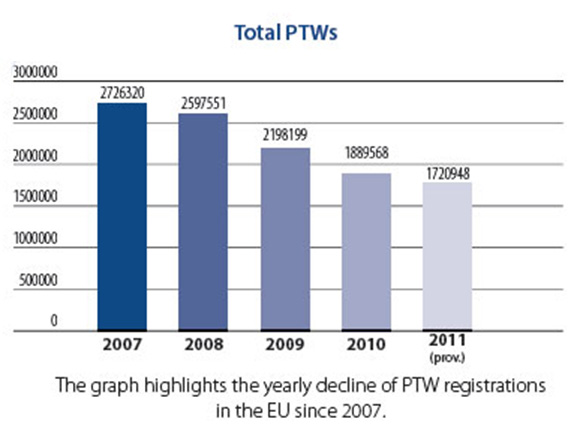The EU's PTW Market Continues Four-year Shrinkage With a 9% Drop in 2011
2012/04/05 | By Quincy LiangUnlike the automobile market, which has recovered over the past two years, the powered two-wheeler (PTW) market in the European Union (EU) has been suffering sales declines every year since 2008 and still sees no sign of a letup in the slump.

According to ACEM, registrations began falling dramatically in the last quarter of 2008 in important markets such as Spain, France, and Greece, leading to a revolution in the European market for motorcycles and scooters. The impact extended even to the Italian market, which once seemed immune to the downturn thanks to subsidies offered by the government for new PTW purchases in 2008 and 2009. When that successful scrapping scheme ended, Europe's biggest PTW market—then Italy—soon lost its primacy to France.
2011 PTW Sales in EU Member Countries (EU15+EU12+EU3)
Marking the greatest losses in 2011 were Italy, down 17%; Spain, off 16%; and the Netherlands, a drop of 13%, reports ACEM. The biggest loser of all was Greece, with a record decline of 25%. Germany and France, which until last year seemed able to contain the damage, saw sales declines of 1.6% and 3.3%, respectively.
Last year's dismal results followed an overall EU PTW market shrinkage of 14% in 2010 and 15% in 2009.





